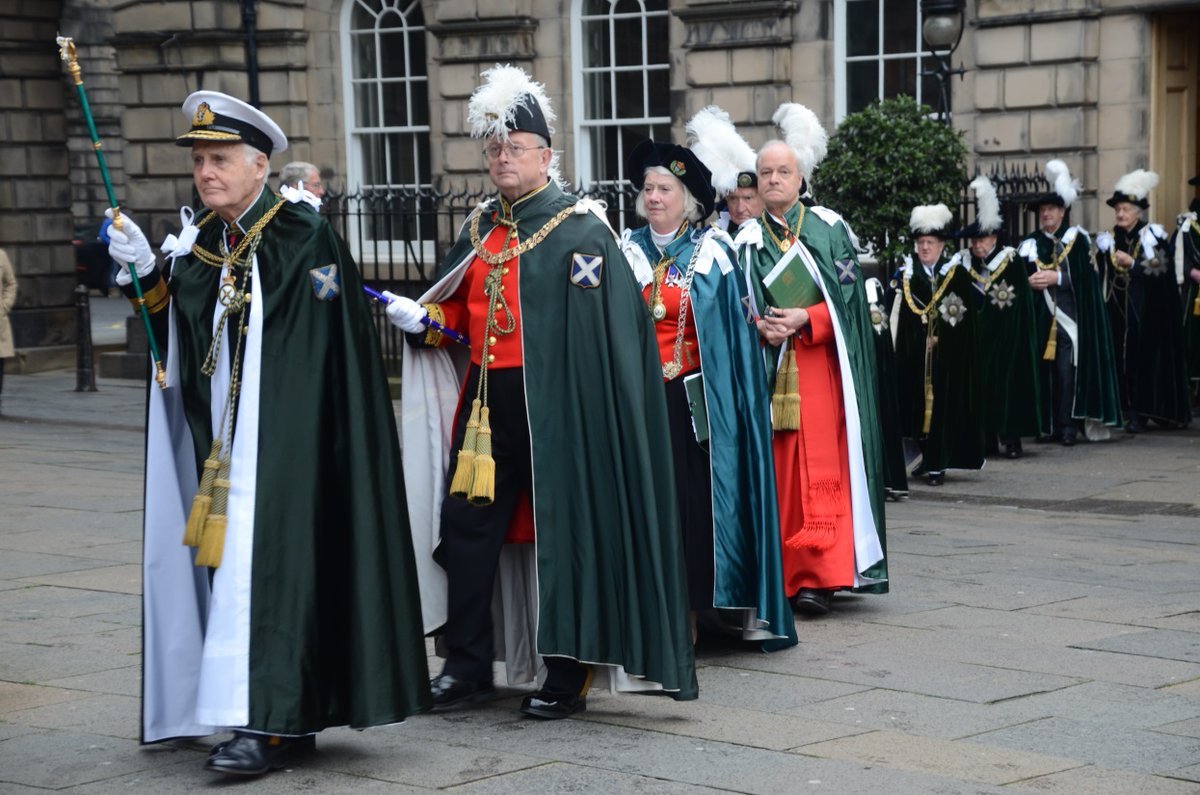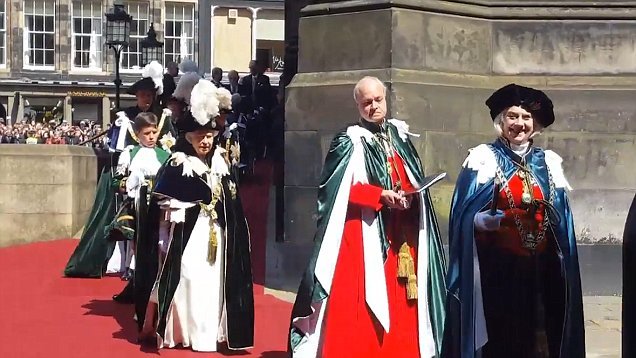Most Ancient and Most Noble
“For, so long as a hundred remain alive, we will never in any degree be subject to the dominion of the English. Since not for glory, riches, or honours do we fight, but for freedom alone, which no man loses but with his life.”
Lauriston Castle
We took advantage of yet another day of good weather on Saturday (Dec 3) to visit Lauriston Castle. The castle is a 45-minute bus ride from Edinburgh and overlooks the Firth of Forth (the estuary north of Edinburgh that leads to the North Sea).
A Lauriston Castle stood on this site in medieval times (prior to 1485) but was almost totally destroyed in 1544. The tower house was rebuilt around 1590, and this is the portion you see above.
During the tour, the guide pulled on a hidden panel to reveal an extremely narrow stone stairway hidden behind the wall that leads up into the turret on the left. How much fun would it be to get to really explore this place? Maybe not in the dark though.
Lauriston Castle as it appeared in 1775, before the 1827 addition.
Engraving of the castle published in 1804.
The house was extended in the Jacobean style in 1827. You can see the change in stonework to the right, where the new front door is now located (see photos above & below).
As merchants, the owner’s lived by the motto inscribed in Latin over the front door: By Sea & By Land. Notice the mermaid’s reflection carved in the mirror.
The back of the castle as seen from the croquet field. Despite the current country manor appearance, the old castle still dominates.
The grounds are just derelict enough that Amanda said they gave her serious flashbacks of playing the Phantasmagoria video game back in 1995. Walking around the exterior—especially the old glass garden house—does leave you wanting to vacate the grounds before nightfall.
Chim chiminey, chim chiminey, chim chim cher-ee
A sweep is as lucky as lucky can be
Blue John is a semi-precious mineral, a rare form of fluorite with bands of a purple-blue or yellowish color. It is only found in the UK at Blue John Cavern and Treak Cliff Cavern at Castleton in Derbyshire (in the Peak District). We toured Blue John Cavern in 2009 and Amanda bought a Blue John necklace that she wore yesterday but, unfortunately, not today. As it turned out, the world’s largest collection of Blue John pieces are found inside Lauriston Castle. The mineral is relatively soft, so the large size of many of these pieces is quite stunning.
Amanda’s Blue John necklace.
"The Terror of Blue John Gap" is a short story by Sir Arthur Conan Doyle, which appeared in The Strand Magazine of 1910 and describes the experiences of a doctor who, while recuperating from tuberculosis on a Derbyshire farm, investigates mysterious goings-on in a cavern mined for Blue John.
The formal drawing room with silk wall coverings.
Hand-stenciled piano in the drawing room.
The room bells and clock from “downstairs.”
The Royal Banner of the Royal Arms of Scotland (above), also known as the Royal Banner of Scotland or more commonly the Lion Rampant of Scotland, and historically as the Royal Standard of Scotland. My guess is the lion statue from Lauriston Castle is an amalgam of the Lion Rampart and the Saltire discussed below.
St Andrew’s Day
Did you know every November 30 Scots celebrate St Andrew’s Day? Neither did we. (Google now does a doddle for St Andrew’s Day.) We were touring Craigmillar Castle and Rosslyn Chapel on that day, so we didn’t notice any particular celebrations that day…but we certainly did today (the first Sunday after the holiday).
Similar to St Patrick’s Day in Ireland or St David’s Day in Wales, St Andrew’s Day brings together Scots and their families to celebrate Scottish culture.
St Andrew was one of Jesus’s 12 disciples and the Bible teaches that Andrew introduced Peter—his brother who is traditionally thought as the first Pope of the Roman Catholic Church—to Jesus.
Andrew would meet a tragic fate as a martyr for his beliefs as Romans decreed that he be crucified; however, the apostle did not believe he was “worthy” to die in the same manner as Jesus.
Therefore, Andrew was crucified on a diagonal cross on November 30, 60 AD, and this X-shaped cross is the symbol of Scotland’s Saltire flag which commemorates St Andrew’s final day.
The national flag of Scotland, also known as St Andrew's Cross or the Saltire, consists of a white saltire defacing a blue field. Saltire is the term for an X-shaped cross. Now that’s Fun With Flags!
By 1320, St Andrew was finally recognized as the patron saint of Scotland following the signing of the Declaration of Arbroath (quote at the very top of this blog) which refers to him as the “gentle Saint Andrew” who would be Scotland’s “patron for ever”—a title retained to this day.
Which brings us to St Giles Cathedral for today’s Sunday morning service. We arrived early and were surprised by commotion near the cathedral entrance. In addition to the being the second Sunday of Advent, it was the first Sunday after St Andrew’s Day and the congregation celebrated The Festival of St Andrew the Apostle Patron of Scotland with the full procession of the Most Ancient and Most Noble Order of the Thistle.
None of the pictures above are from today, they are all old shots from the internet; however, they very much represent the show of pomp and circumstance on display before and after this morning’s service. Different groups within the Order wore different outfits—from military and police, to barristers in wool wigs, to liturgical draping, to dress kilts with sporrans and knee socks, to royal robes—each was deeply ornate and no doubt steeped in symbolism. There were standard bearers, scepters, and ceremonial batons. Here is the impressive list of those from the Order in attendance today:
The First Lesson was read by Maj Gen Alastair Bruce of Crionaich, Governor of Edinburgh Castle; the Second Lesson was read by Lady Elish Angiolini LT; and the sermon was delivered by The Very Rev Prof David Fergusson, Dean of the Thistle. (Aren’t their titles so formal?)
You may recall from our blog “A Castle and A Chapel” from December 1, that we saw this portrait of the late Queen in her Order of the Thistle regalia.
Irrespective of the pomp, the service lived up to our previous experience with a meaningful sermon and exceptional choral music. Having so many present from the Order did add considerably to the volume when hymns were sung.
Sorry to always go back to Harry Potter, but today really solidified the comment I made on our first post “Nisi Dominus Frustra” back on November 18:
The massive stone edifices of the Royal Mile and the castle dwarf the kirkyard, as though the story of Harry Potter was simply waiting for the proper person to coax it from the stones. If there is such a thing as the birthplace of Harry Potter, this would surely be it.
The events of day have only served to solidify my suspicion that Harry Potter could only have been written with crooked cobblestones underfoot, the thousand-year-old spirit of King Athelstan still whispering in the wind, the echos of songs sung in 1124 living in the stones of St Giles’ Cathedral, names slowly eroding from tombstones—all in the dim of a northern city. The robes, the insignia, the batons—the magnitude of history on display. It is unique, full of meaning, and deeply powerful to experience. In short, it is was inspirational. May your day be equally filled with the power of mystery and inspiration!

























